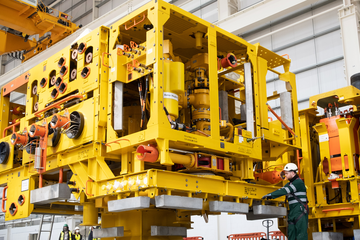Visão geral
Desafios
- Equinor required subsea production system infrastructure for the Snøhvit greenfield development
- Three additional injection wells were required to increase CO2 injection capacity
- The solution would feed natural gas to a land-based plant located in the far NW coast of Norway
Results
- Early engagement allowed us to provide tailored solutions for Equinor
- Optimized the subsea architecture with dual-purpose subsea trees for both production and injection
- Designed an integrated subsea choke suitable for flow in both directions
- Choke design allowed fast actuation timing and superior controllability and stepping resolution
Equinor sought to push the boundaries back in 2002 to capture CO2. They required subsea production system infrastructure for the Snøhvit greenfield development that would feed natural gas to a land-based plant on the island of Melkøy, located on the far North-West coast of Norway. Carbon dioxide is separated on the island and then pumped back into the reservoir. This field supplies gas to the world’s first LNG plant with CO2 capture and storage. In 2013, Equinor then required a further three injection wells to increase CO2 injection capacity.
Baker Hughes worked closely with Equinor through the front-end engineering and execution-readiness phases to define the technology and equipment scope for the initial 11 well development. Then, we collaborated closely on required technology development efforts, e.g. related to long step-out power and communication technology. We designed a solution comprising of SPS equipment and umbilicals that fostered a collaborative partnership for installation and commissioning as well as aftermarket services.
Early engagement with Equinor allowed solutions to be tailored to their needs. This allowed us to optimize the subsea architecture with dual-purpose Xmas trees for both production and injection. We also designed an integrated subsea choke suitable for flow in both directions. Our design allowed for both fast actuation timing and superior controllability and stepping resolution. This allowed Equinor greater control of the production and injection rates.
We were able to collaborate from initial concept through to execution and beyond through the life of the field. We developed a relationship based on trust from the earliest stages, leveraging Baker Hughes' extensive experience of field development strategy and our understanding of Equinor’sneeds.
Equinor is now in a leading position in the CCUS market and Baker Hughes is proud to have played a part in such a ground-breaking project.



